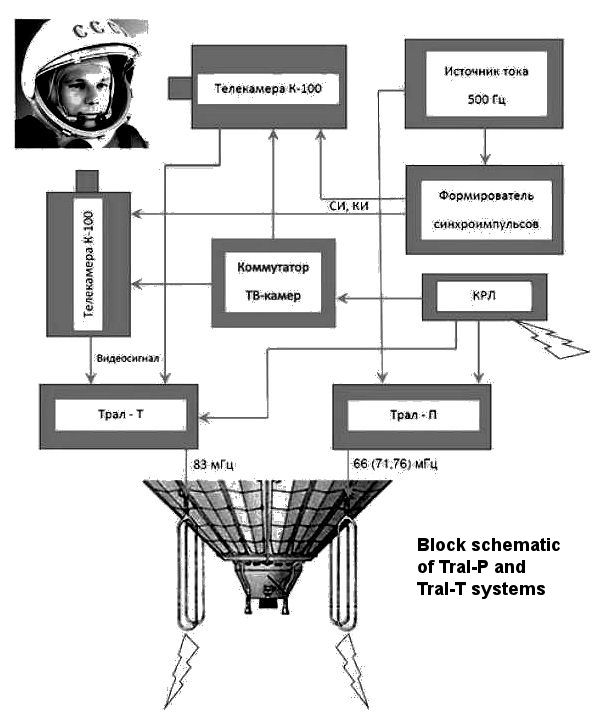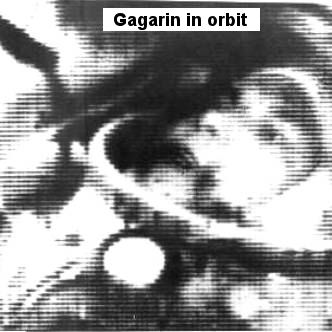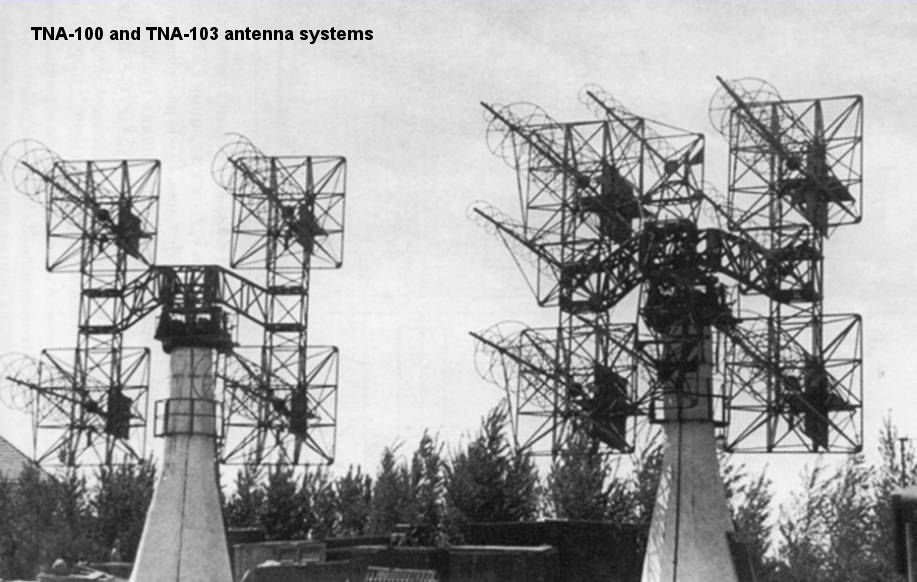

These organizations have already had experience collaborating in the joint development of a system for transmitting images of the far side of the moon (not flown). It was decided to create a joint development called Tral-T. VNIIT would provide television cameras and ground-based image recording facilities. Those units were called “Seliger”.
OKB MEI took on the conversion of the video signal
of the cameras into the code of the Tral system, its radiation from the
spacecraft, reception on Earth and conversion back to the video signal. The
radio system was called “Tral-T” and based heavily on the Tral-P
system
used to transmit from Vostok (and other spacecraft and missiles).
The new system was to be developed and
deployed at a number of ground stations put into operation in less than a
year.
By checking several sources I think I can state how the
Vostok TV system worked for the Korabl-Sputniks (starting with “Sputnik-5”) and
Vostok-1 and -2.
It appears that the basic parameters of the Seliger TV complex were:
- Horizontal scan frequency - 1000 Hz
- This was generated by a frame rate of 10 Hz (10 frames per second) with 100 lines in each frame.
- There were 100 picture elements in each line.
-
Each picture element was represented by a pulse in the Tral-T PPM-AM radio
system.
Total pulse rate: 100 lines/frame*100 pixels/line*10 frames/second=100 000 pixels/second, or if you wish 100 000 pulses/second. There were only 5 video levels per pixel, i.e. the pulse in each PPM slot could take on one of five positions. Whether or not this was logarithmic representation of the light level is not known. The carrier frequency for the Tral-T transmitter for Seliger system was 83 MHz. Pulses in the Tral system were about T=1.1 µsec, leading to an RF bandwidth of about 900 kHz (1/T).
 Mobile
receiving stations were placed near Leningrad (Krasnoe Selo), in the Crimea
(near Simferopol) and at Baikonur. The Korolev design bureau also received a
mobile receiving station. The stationary reception units were placed at
Yeniseisk and Kamchatka (Yelizovo). In addition a Seliger ground station was
located at the reception center of the base of the OKB MPEI training ground in
Bear Lakes outside Moscow.
Mobile
receiving stations were placed near Leningrad (Krasnoe Selo), in the Crimea
(near Simferopol) and at Baikonur. The Korolev design bureau also received a
mobile receiving station. The stationary reception units were placed at
Yeniseisk and Kamchatka (Yelizovo). In addition a Seliger ground station was
located at the reception center of the base of the OKB MPEI training ground in
Bear Lakes outside Moscow.
Starting with Vostosk-3 in 1962 the Seliger system was upgraded to these specifications: horizontal scan frequency - 4000 Hz,this was generated by a frame rate of 10 Hz (10 frames per second) with 400 lines in each frame. There were 400 picture elements in each line. Each picture element was represented by a pulse in the Tral-T PPM-AM radio system (derived from the Tral-P telemetry system). The total pulse rate was : 400 lines/frame*400 pixels/line*10 frames/second=1 600 000 pixels/second, or if you wish 1 600 000 pulses/second.
The image on the left shows Yuri Gagarin while in orbit.
The picture below shows the TNA-100 and TNA-103 ground antenna systems used to pick up Tral transmissions, including television signals.
Many thanks to Alexander Nema (a.k.a. “Telemetrist”) and his daughter Maria for pointing me at the relevant sources and translating key information!

Sources
1. B.B.
Ivanov
2. V.A. Efimov
3. The beginning of cosmos vision, contribution of OKB MEI
![]()